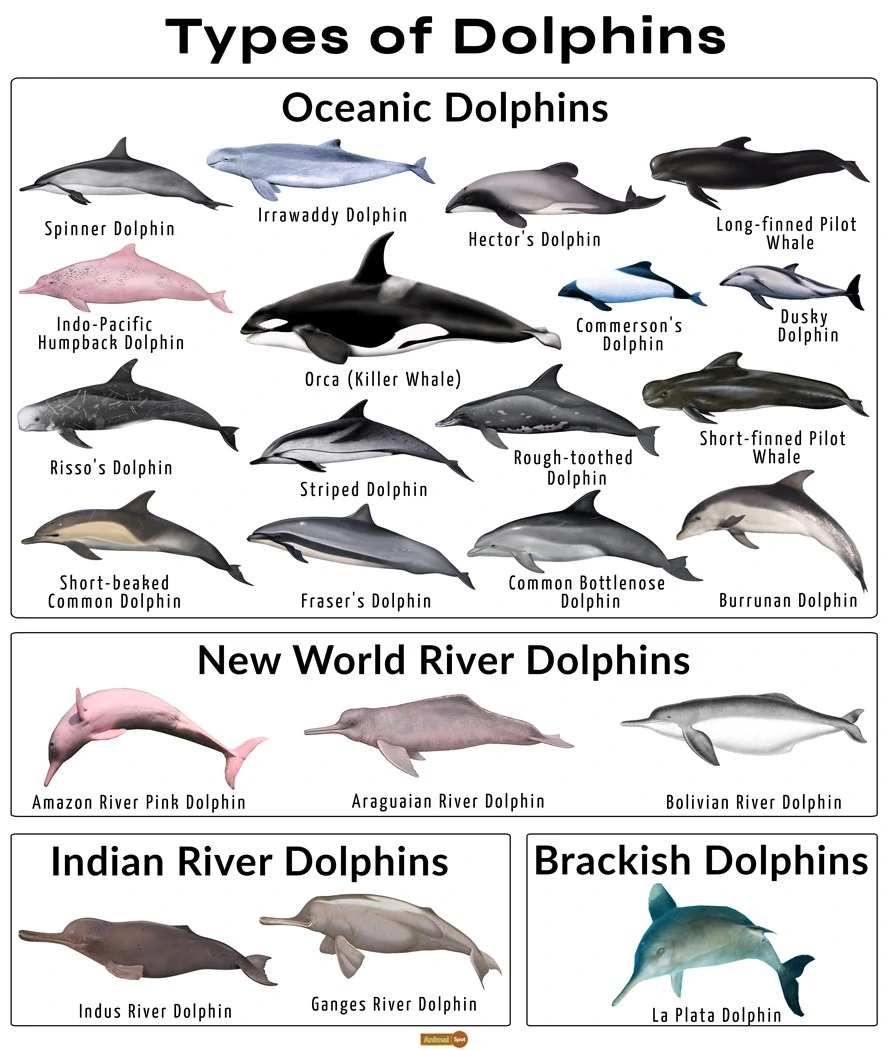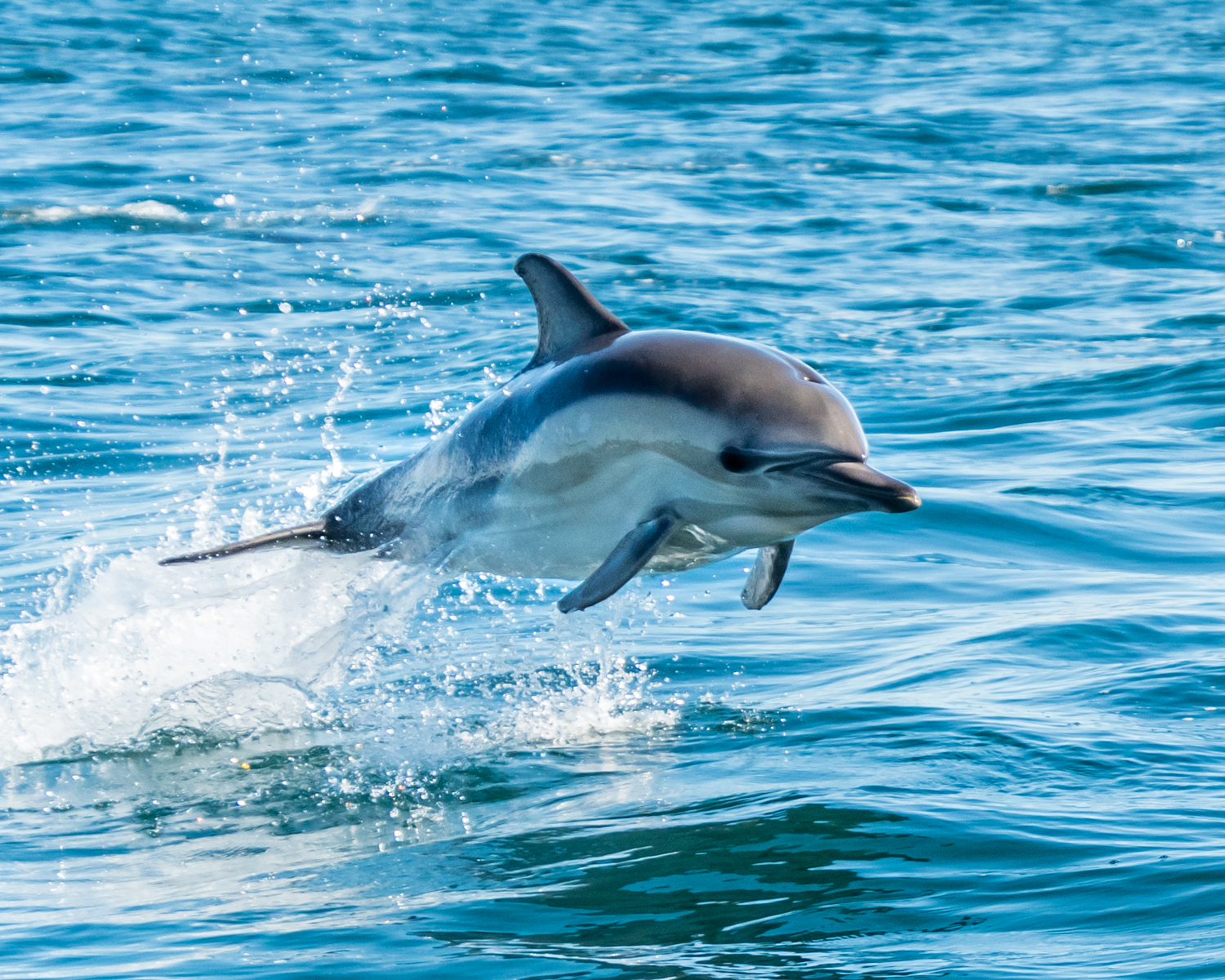Exploring Dolphin Facts to Appreciate These Magnificent Marine Creatures
Wiki Article
Unveiling Dolphin Facts: Nature's Intelligent Marine Mammals
Dolphins, commonly concerned as one of the sea's most intelligent residents, show a fascinating range of actions and social frameworks that require closer assessment. With over 40 distinctive species, these marine animals not just show remarkable communication abilities and facility social interactions but likewise have innovative cognitive capabilities that test our understanding of non-human knowledge.Dolphin Variety Diversity
Dolphins are a diverse group of aquatic mammals belonging to the family Delphinidae, which includes over 40 unique types. This household includes well-known types such as the typical bottlenose dolphin (Tursiops truncatus), the orca or killer whale (Orcinus orca), and the risso's dolphin (Grampus griseus) Each species exhibits distinct physical attributes, actions, and adjustments that allow them to grow in various marine environments.
Dolphin species differ substantially in dimension, ranging from the little Maui's dolphin (Cephalorhynchus hectori) at approximately 1.2 meters to the whale, which can reach sizes of up to 9 meters. Their pigmentation also varies, with some varieties presenting striking patterns that assist with camouflage or social signaling. Furthermore, dolphins occupy diverse habitats, from coastal regions and estuaries to the open sea, showcasing their versatility.
Study right into dolphin species diversity highlights the ecological importance of these creatures, as they play crucial roles in aquatic ecosystems. Understanding the numerous types is important for preservation efforts, as many encounter dangers from habitat climate, loss, and air pollution adjustment, demanding targeted security steps to guarantee their survival.
Social Structures and Habits
The complexity of dolphin species is mirrored in their detailed social frameworks and actions. Dolphins are understood for their highly social nature, commonly forming teams called sheaths, which can vary from a couple of individuals to over a hundred. These husks are commonly made up of member of the family, showcasing a matrilineal framework where women play a main function in supporting and maintaining social bonds spawn.
Additionally, some varieties of dolphins, such as orcas, demonstrate complicated social habits that can include sub-pods or clans with distinctive cultural practices. These social frameworks are important for the survival and wellness of dolphin populations, as they promote communication, cooperation, and the transmission of knowledge throughout generations. Understanding these social dynamics is essential for conservation efforts and the defense of their natural environments.
Communication Techniques
Amongst the various techniques of interaction, dolphins make use of an advanced array of interaction techniques that facilitate social cohesion and coordination within their pods. These techniques incorporate vocalizations, body language, and echolocation, each serving distinct functions in their social interactions.Dolphins generate a large range of clicks, whistles, and pulsed sounds, which function as their key singing communication. Each dolphin has a special trademark Related Site whistle, akin to a name, that enables individuals to recognize one another also in big teams. These vocalizations can convey different messages, such as alerting others to danger or collaborating team activities during hunting.
In addition to vocalizations, body movement plays a crucial role in dolphin interaction. Dolphin postures, such as leaping, spinning, and even refined changes in alignment, share moods and purposes. Aggressive display screens may discourage competitors, while lively habits can boost social bonds - Dolphin Facts.
Echolocation, an organic finder system, more about his help in navigation and hunting. By discharging acoustic waves and interpreting the returning echoes, dolphins can locate prey and obstacles properly, demonstrating their amazing versatility in complicated marine environments. Collectively, these communication techniques highlight the detailed social lives of dolphins, highlighting their knowledge in browsing their underwater globe.

Knowledge and Issue Solving
Identified for their sophisticated communication abilities, dolphins also show remarkable knowledge and problem-solving capacities that additionally boost their social interactions. Their cognitive abilities are evidenced by their capacity to learn intricate tasks, recognize abstract ideas, and adjust to various environmental obstacles. Research has revealed that dolphins can resolve intricate puzzles, demonstrating not just their cognitive flexibility however additionally their ability for planning and foresight.Dolphins usually take part in cooperative hunting methods, showcasing their capability to work as a cohesive system. This synergy requires innovative analytical abilities, as they must examine their setting, recognize possible target, and coordinate their activities to accomplish a typical objective. In addition, dolphins have been observed making use of tools, such as marine sponges, to protect their snouts while foraging on the ocean flooring, further exemplifying their innovative problem-solving abilities.

Human-Dolphin Communications
Human-dolphin interactions have astounded researchers and lovers alike, highlighting the complicated partnership in between these intelligent marine creatures and human beings. From ancient times, dolphins have been illustrated in art and folklore, symbolizing harmony and knowledge (Dolphin Facts). Modern communications range from scientific research and preservation efforts to recreational activities like dolphin swimming and seeing with dolphinsResearch study has actually demonstrated that dolphins possess advanced social structures and interaction abilities, which promote their communications with humans. These encounters typically foster emotional connections, with numerous individuals reporting feelings of happiness and compassion throughout such experiences. However, it is necessary to come close to these communications with care, as human tasks can interfere with dolphin actions and environments.
Preservation campaigns increasingly concentrate on promoting liable communications, guaranteeing that human interest does not jeopardize dolphin welfare. Education and learning programs aim to raise understanding about the eco-friendly importance of dolphins, stressing the requirement for sustainable practices.
Conclusion
In summary, dolphins exemplify exceptional knowledge and adaptability within diverse aquatic atmospheres. Continued research and awareness are necessary for cultivating a deeper understanding of dolphins and advertising their welfare in a significantly endangered ecosystem.Dolphin varieties differ significantly in dimension, varying from the tiny Maui's dolphin (Cephalorhynchus hectori) at approximately 1.2 meters to the orca, which can reach lengths of up to 9 meters. Dolphins show a selection of social communications, consisting of grooming and physical contact, which serve to strengthen connections and establish power structures.
Recognized for their innovative interaction abilities, dolphins additionally exhibit remarkable knowledge and problem-solving abilities that further enhance their social interactions. Modern interactions range from clinical study and preservation initiatives to entertainment activities like dolphin swimming and viewing with dolphins.
Research has shown that dolphins possess progressed social structures and communication skills, which facilitate their communications with human beings.
Report this wiki page